Address
304 North Cardinal
St. Dorchester Center, MA 02124
Work Hours
Monday to Friday: 7AM - 7PM
Weekend: 10AM - 5PM
Address
304 North Cardinal
St. Dorchester Center, MA 02124
Work Hours
Monday to Friday: 7AM - 7PM
Weekend: 10AM - 5PM
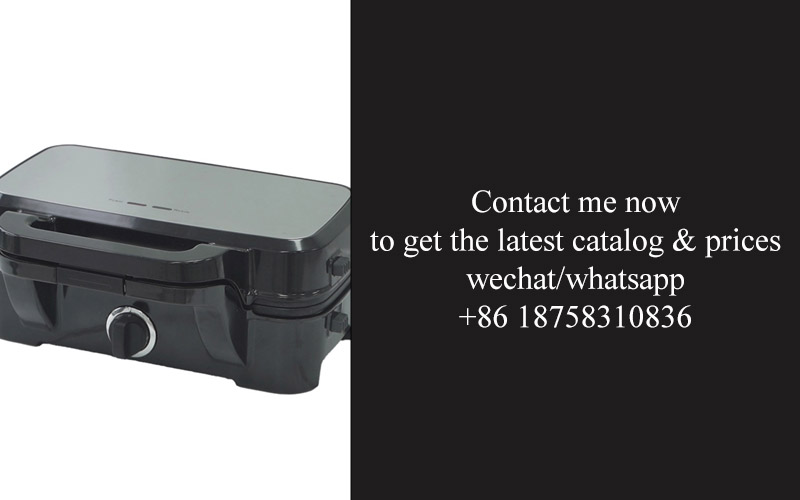
In the ever-evolving world of technology and consumer lifestyles, the kitchen has emerged as a battleground for innovation. Appliances that were once seen as mere tools for cooking and cleaning are now becoming smart, efficient, and integral to the modern home. As we delve into the intricacies of the kitchen appliance industry, it’s clear that the landscape is changing rapidly, driven by consumer demands and technological advancements. From sleek designs to cutting-edge features, the appliances of today are not just enhancing our daily routines but also reshaping the way we interact with our living spaces.
The European and American kitchen appliance industry has long been a hub of innovation and design, offering consumers a wide array of options to enhance their culinary experiences. With a rich history of technological advancements, this sector has continually evolved to cater to the ever-changing needs and preferences of homeowners.
In Europe, the kitchen appliance market is characterized by a strong emphasis on sustainability and energy efficiency. Brands like Siemens, Bosch, and Miele have set the standard for quality and performance, integrating smart technology into their products to make cooking more convenient and eco-friendly. From high-end ovens and dishwashers to compact appliances like toasters and kettles, European manufacturers are known for their sleek aesthetics and cutting-edge features.
Similarly, the American kitchen appliance industry boasts a diverse range of products that cater to different lifestyles and budgets. Brands like KitchenAid, GE, and Whirlpool have become household names, offering a wide selection of appliances that combine functionality with style. The US market is particularly known for its innovative small appliances, such as high-tech blenders, coffee makers, and air fryers, which have gained popularity for their versatility and ease of use.
One of the key trends in both regions is the integration of smart technology into kitchen appliances. Smart fridges, ovens, and even cooktops are becoming increasingly common, allowing users to control and monitor their appliances remotely via smartphones or tablets. This not only adds convenience but also promotes energy savings and greater food management.
In Europe, the focus on sustainability is evident in the design of appliances that are not only energy-efficient but also durable and repairable. The concept of a circular economy is gaining traction, with manufacturers encouraging customers to extend the life of their appliances through maintenance and recycling programs.
American consumers, on the other hand, are driven by a culture of convenience and innovation. The rise of e-commerce has made it easier for customers to compare prices and features, often leading to the adoption of the latest technological advancements. This has spurred competition among brands, resulting in a continuous stream of new and improved products.
When it comes to cooking appliances, European ovens and ranges are renowned for their precision and control, while American cooktops and stovetops offer a variety of heat settings and surface materials. Both regions have seen a growing interest in induction cooking, which provides a more efficient and safer cooking experience.
In the realm of small appliances, Europe and America differ in their preferences. European consumers tend to gravitate towards compact, multifunctional devices that can perform a range of tasks with minimal space. American consumers, on the other hand, are more inclined towards single-purpose appliances that excel in their specific functions, such as powerful blenders and high-quality coffee makers.
Despite these regional differences, there is a common thread in the European and American kitchen appliance industry: a commitment to safety. Both markets are subject to strict regulations and certifications, ensuring that every appliance on the shelves meets the highest standards of safety and performance.
As the industry continues to grow, manufacturers are looking towards the future with a focus on connectivity, customization, and sustainability. The integration of artificial intelligence and machine learning into kitchen appliances is expected to bring about a new era of personalized cooking experiences, where appliances can learn from user habits and adapt accordingly.
In conclusion, the European and American kitchen appliance industry is a dynamic and forward-thinking sector that is constantly evolving to meet the demands of modern homeowners. With a blend of traditional craftsmanship and cutting-edge technology, these appliances not only enhance the cooking experience but also reflect the cultural and technological advancements of their respective regions.

The European and American kitchen appliance industry has seen a surge in innovation, with manufacturers pushing the boundaries of what’s possible in the realm of home cooking. Amidst this wave of progress, the ETL listed 1800W unit has emerged as a potential game-changer, offering a blend of power, efficiency, and modern design that could redefine kitchen standards.
In the quest for high-performance appliances, the ETL listing has become a benchmark of safety and quality. This certification, recognized in both Europe and the United States, ensures that the 1800W unit meets stringent safety standards and regulatory requirements. It’s this stamp of approval that has consumers and industry experts taking notice.
The 1800W unit itself is a marvel of engineering, boasting a robust design that promises to deliver superior performance. Its high power output allows for quick and efficient cooking, whether you’re searing a steak or boiling water for pasta. This level of power isn’t just about speed; it’s also about the ability to handle a variety of cooking techniques that may require intense heat.
Efficiency is a key selling point for the 1800W unit. With advanced technology that optimizes energy use, this appliance can save users both time and money. The ability to cook a meal with minimal energy consumption is particularly appealing in an era where sustainability is a growing concern. The unit’s energy-saving capabilities could make it a favorite among eco-conscious consumers.
Modern aesthetics are not overlooked in the design of the 1800W unit. It’s sleek and stylish, capable of fitting into any kitchen decor, from the most traditional to the most contemporary. The sleek lines and innovative look of the appliance make it not just a functional tool but also a statement piece. This is a unit that can elevate the look of a kitchen while providing unparalleled performance.
While the ETL certification guarantees safety, it’s the unit’s features that truly set it apart. For instance, the 1800W unit may come with features like temperature control, which allows users to precisely manage the cooking process. This is especially beneficial for those who enjoy cooking complex dishes that require exact temperature regulation.
Ease of use is another standout aspect of the 1800W unit. The design of the controls is intuitive, making it simple for anyone, regardless of their culinary expertise, to operate. Features like touch-sensitive panels or digital displays enhance the user experience, providing clear and accessible information.
When it comes to the market, the introduction of the ETL listed 1800W unit could shake things up. Competitors may feel the pressure to improve their offerings to keep pace with this new standard. The unit has the potential to become a benchmark for what’s expected in high-performance kitchen appliances.
However, the success of the 1800W unit will depend on more than just its features and certifications. Consumer acceptance will play a significant role. Will consumers be willing to invest in a unit with a higher price tag for the promise of better performance and energy efficiency? The answer to this question will determine how quickly the unit can capture market share.
Additionally, the unit’s adaptability to different cooking styles and its ability to integrate seamlessly with other kitchen appliances will be crucial. The more versatile the unit is, the more likely it is to become a staple in kitchens around the world.
The ETL listed 1800W unit is not just another kitchen appliance; it’s a symbol of the direction in which the industry is heading. It represents a commitment to safety, efficiency, and style, all of which are becoming increasingly important to consumers. As the unit gains traction in the market, it could pave the way for a new era of kitchen appliances that are both powerful and practical.
In conclusion, while it’s too early to declare the ETL listed 1800W unit a definitive game-changer, its potential is undeniable. The combination of advanced technology, a commitment to quality, and a focus on consumer needs could make this unit a standout in the competitive kitchen appliance market. Only time will tell if it will indeed alter the landscape of kitchen technology as we know it.
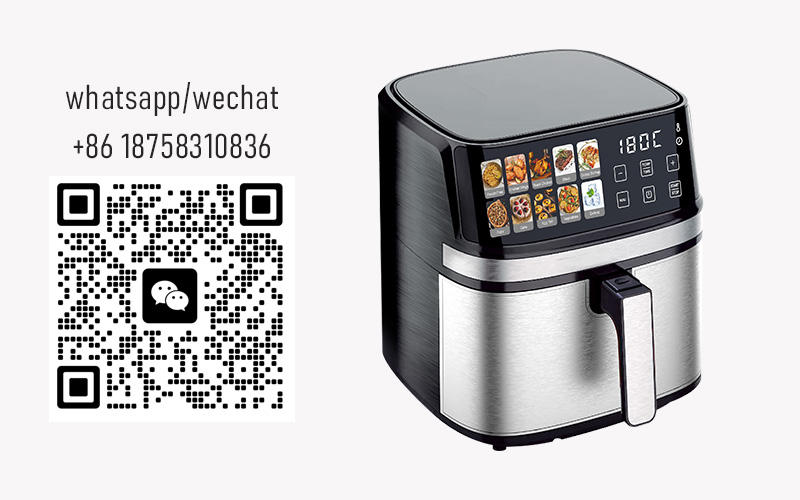
The kitchen appliance landscape is constantly evolving, with manufacturers pushing the boundaries of technology and design. Here’s a glimpse into some of the most innovative advancements reshaping our culinary experiences:
In recent years, smart technology has become a cornerstone of kitchen appliances. From fridges that can track your groceries to ovens that can be controlled via your smartphone, the integration of IoT (Internet of Things) has revolutionized how we interact with our kitchen tools. These smart appliances not only offer convenience but also provide insights and analytics that can help us make more informed decisions about our food and health.
Energy efficiency is a critical factor in kitchen appliance innovation. As environmental concerns grow, manufacturers are focusing on creating products that consume less energy without compromising performance. For instance, induction cooktops have gained popularity due to their ability to heat pots and pans quickly while using up to 90% less energy than traditional electric cooktops. LED lighting in refrigerators and dishwashers is another example of energy-saving technology that extends the life of the appliance and reduces electricity bills.
Design has always played a significant role in kitchen appliances, but modern innovations are blurring the lines between aesthetics and functionality. sleek, minimalist designs are now commonplace, with appliances that seamlessly blend into the kitchen’s decor. The rise of integrated appliances, such as ovens and cooktops that share a single countertop surface, offers a sleek look and saves space. Additionally, touchless technology has become a favorite among consumers, allowing for hands-free operation and reducing the spread of germs.
The rise of personalization in kitchen appliances is a testament to the evolving needs and preferences of consumers. Smart refrigerators can now be customized to suit individual dietary needs, with features like automatic meal planning and customized grocery lists. Similarly, dishwashers with adjustable racks and multiple wash cycles cater to different load sizes and cleaning requirements. These personalization options ensure that every kitchen appliance is tailored to the user’s specific habits and preferences.
Safety has always been a top priority in kitchen appliance design, but new technologies are taking safety to the next level. Sensors and automatic shut-off features in ovens and stovetops prevent overcooking and potential fires. Gas leak detectors in kitchen ranges provide immediate alerts if there’s a gas leak, enhancing safety. Additionally, childproof locks and temperature controls on toasters and microwaves are designed to prevent accidents and burns.
Health and wellness are increasingly at the forefront of kitchen appliance innovation. High-end appliances now come with features that promote a healthier lifestyle, such as steam ovens that preserve the nutritional value of food during cooking. Air fryers have also gained popularity for their ability to cook crispy, golden foods with minimal oil. These healthier alternatives to traditional cooking methods not only improve the health profile of our meals but also reduce the need for excess fats and calories.
Appliance connectivity is another area seeing rapid innovation. Many kitchen appliances can now be connected to home automation systems, allowing users to control their appliances remotely. This connectivity extends beyond convenience; it also allows for better energy management and the ability to optimize cooking times and temperatures based on real-time data.
The integration of voice assistants and AI (Artificial Intelligence) into kitchen appliances is another exciting development. Users can now ask their ovens or refrigerators to adjust settings, play music, or provide recipes, all with a simple voice command. This level of integration not only makes cooking more accessible but also adds a touch of futurism to the kitchen.
Finally, the sustainability movement is influencing the design and production of kitchen appliances. Manufacturers are exploring eco-friendly materials, reducing waste during production, and designing appliances that can be easily recycled at the end of their life. This commitment to sustainability ensures that kitchen appliances are not just innovative but also responsible.
In conclusion, the world of kitchen appliances is constantly evolving, driven by a combination of technological advancements, consumer demands, and environmental concerns. From smart technology and energy efficiency to design and health-focused features, the innovations in kitchen appliances are reshaping how we cook, clean, and interact with our kitchen spaces.

In the ever-evolving landscape of kitchen appliances, understanding market analysis and consumer demand is pivotal. The dynamics of these factors can significantly influence the direction and success of product development. Let’s delve into the intricacies of this interplay.
Consumer preferences have shifted towards more energy-efficient and user-friendly appliances. Smart kitchen gadgets, for instance, are becoming increasingly popular, reflecting a trend toward convenience and connectivity. The integration of IoT (Internet of Things) technology in kitchen appliances has not only made cooking more efficient but has also allowed manufacturers to gather valuable data on usage patterns.
Energy-saving features are no longer just a bonus but a necessity. As environmental concerns grow, consumers are gravitating towards appliances that offer eco-friendly options, such as LED lighting and programmable settings that reduce energy consumption. This shift is evident in the sales figures of appliances like refrigerators and dishwashers, which now come with energy-efficient certifications.
The demand for multifunctional appliances is on the rise. Consumers are looking for devices that can perform multiple tasks, saving space and reducing the need for separate gadgets. For example, a single appliance that can both toast and bake is not just a novelty but a practical solution for busy households.
Design and aesthetics play a crucial role in consumer choice. Modern kitchens are not just functional spaces but also serve as a reflection of personal style. Appliances with sleek designs and customizable finishes are more likely to catch the eye of consumers. Brands that invest in design are often able to command premium pricing.
The age demographic is also a significant factor in market analysis. Younger consumers, for instance, are more likely to embrace smart technology and are more open to purchasing products with the latest features. On the other hand, older consumers might prefer appliances that are simple to use and maintain, emphasizing reliability and ease of operation.
Health and wellness trends are influencing the kitchen appliance market. There’s a growing interest in appliances that can help consumers prepare healthier meals, such as slow cookers and air fryers. These appliances offer healthier cooking options compared to traditional methods like frying or broiling.
Retail channels are also impacting consumer demand. Online sales have seen a surge, with more consumers turning to e-commerce platforms for convenience and a wider selection. However, brick-and-mortar stores still play a vital role, especially for high-end appliances where customers prefer to see and touch the product before making a purchase.
Globalization has expanded the market for kitchen appliances. Consumers in different regions have varying preferences, influenced by local cooking habits and cultural norms. For example, induction cooktops are gaining popularity in Europe and Asia, while traditional gas ranges remain popular in the United States.
Branding and marketing strategies are essential in meeting consumer demand. Brands that effectively communicate the benefits of their products and establish a strong connection with their target audience are more likely to succeed. Social media campaigns, influencer partnerships, and engaging content are becoming key components of successful marketing strategies.
In conclusion, the market analysis of kitchen appliances is a complex tapestry woven from the threads of consumer preferences, technological advancements, design trends, and global influences. Understanding these factors is crucial for manufacturers looking to innovate and meet the demands of today’s consumers.
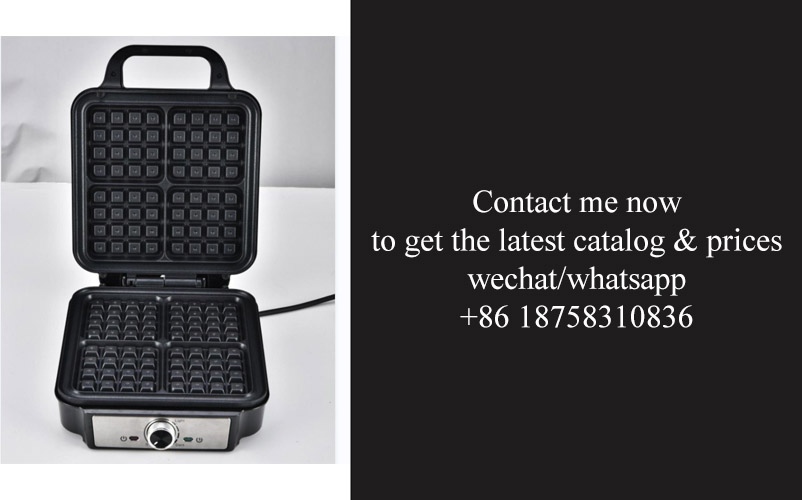
In the realm of kitchen appliances, the competitive landscape is a dynamic and evolving battlefield where brands vie for the attention and loyalty of consumers. From high-end, sleek designs to budget-friendly, practical solutions, the market is saturated with options. Let’s delve into the intricacies of this competitive environment.
The rise of smart appliances has reshaped the landscape, with manufacturers scrambling to integrate technology into their products. These smart devices not only offer convenience but also provide insights into usage patterns, energy consumption, and maintenance schedules. Companies like Samsung, LG, and Whirlpool have been at the forefront of this trend, pushing the boundaries of what a kitchen appliance can do.
Brands that have traditionally catered to the premium market segment continue to innovate with high-quality materials and cutting-edge features. Gaggenau, Miele, and Viking, for instance, are known for their luxury appliances that often come with a price tag to match. Their focus on durability, efficiency, and aesthetic appeal keeps them competitive in a niche market where consumers are willing to invest.
On the other side of the spectrum, there’s a growing demand for budget-friendly appliances that don’t compromise on performance. Brands like KitchenAid, Bosch, and Kenmore have managed to carve out a niche by offering a range of products that balance affordability with reliability. Their strategies include offering limited editions, promotional discounts, and value packs to attract price-sensitive consumers.
The integration of sustainability into the competitive landscape is another notable trend. As consumers become more environmentally conscious, appliance manufacturers are under pressure to produce energy-efficient, eco-friendly products. Companies like Electrolux and Haier have responded by introducing appliances that are not only cost-effective but also have a reduced carbon footprint. This shift is not just about marketing; it’s a direct reflection of consumer values.
The rise of online marketplaces has also had a significant impact on the competitive landscape. Websites like Amazon and eBay have become go-to destinations for appliance shopping, allowing consumers to compare prices and read reviews from fellow buyers. This has forced manufacturers to be more transparent about their products and to ensure that their online presence is robust and informative.
Local and regional brands have also found their place in the competitive landscape. These companies often have a better understanding of local consumer needs and preferences, which allows them to tailor their offerings accordingly. For example, Smeg, an Italian brand, has become popular for its retro designs that appeal to consumers looking for a touch of style in their kitchens.
The importance of brand partnerships cannot be overstated. Collaborations between appliance manufacturers and kitchen designers have led to the creation of integrated appliance lines that complement each other in terms of style and functionality. These partnerships not only enhance the consumer experience but also create a sense of exclusivity and prestige around certain products.
The competitive landscape is also characterized by a constant stream of new entrants. Startups and smaller companies are bringing innovative solutions to market, often leveraging advancements in technology to offer unique features and benefits. While these new players may not have the same market presence as established brands, they are shaking things up and challenging the status quo.
In the realm of customer service and support, the competitive edge is often won or lost. Brands that invest in exceptional customer experiences, whether through a strong warranty program, easy-to-navigate support websites, or personalized service, stand out from the crowd. The level of service a company provides can be a deciding factor for consumers when making a purchase.
Lastly, the competitive landscape is global, with brands vying for market share not just within their home countries but on an international scale. This means that appliance manufacturers must navigate cultural differences, regulatory requirements, and supply chain complexities to succeed in various markets.
In summary, the competitive landscape of kitchen appliances is multifaceted, encompassing a wide range of factors from product innovation to customer service. As consumer needs and preferences continue to evolve, so too will the strategies employed by manufacturers to remain competitive in this ever-changing market.
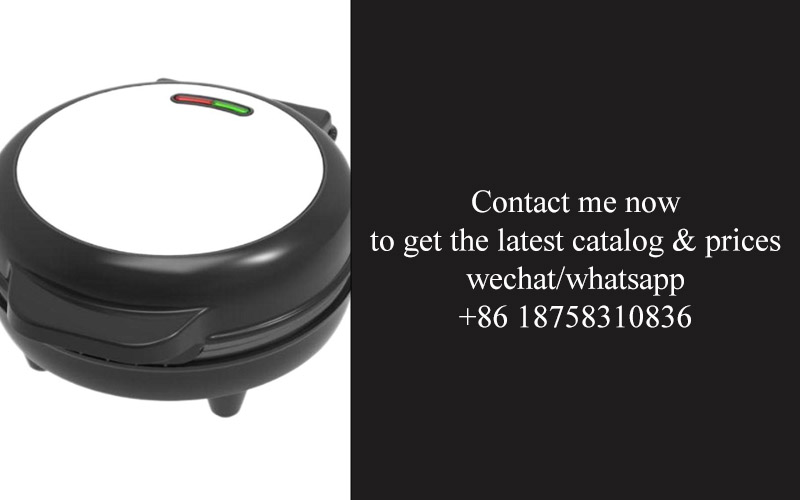
In today’s fast-paced world, data has become a cornerstone for making informed decisions across all industries. The kitchen appliance sector is no exception, where data-driven insights are reshaping strategies and consumer experiences. Let’s delve into some key findings and how they’re influencing the market.
The Consumer Behavior ShiftConsumer preferences have evolved significantly, with a growing emphasis on smart technology and sustainability. Data reveals that customers are more likely to invest in appliances that offer connectivity, allowing them to monitor and control their devices remotely. Additionally, there’s a noticeable trend towards eco-friendly appliances, as consumers seek to reduce their carbon footprint.
Market Trends and GrowthAnalyzing market trends, it’s clear that certain segments are experiencing rapid growth. For instance, smart refrigerators and dishwashers are becoming increasingly popular, driven by the integration of AI and IoT capabilities. The data indicates a steady increase in sales for these smart kitchen appliances, reflecting a broader shift towards a more connected home.
Product Innovation and DevelopmentData from recent product launches paints a picture of innovation at its peak. Brands are pushing the boundaries with features like voice control, touchless interfaces, and energy-efficient designs. The insights from these developments suggest that innovation is not just a buzzword but a critical factor in staying competitive in the market.
Price Sensitivity and AffordabilityWhile some consumers are willing to pay a premium for cutting-edge technology, there’s a significant portion of the market that remains price-sensitive. Data indicates that there’s a delicate balance between cost and quality, with many shoppers looking for affordable yet reliable appliances. This insight underscores the importance of offering value-driven options.
Regional Variations and GlobalizationThe competitive landscape is as diverse as the global consumer base. Data from various regions highlights different preferences and buying behaviors. For example, in Europe, there’s a preference for energy-efficient appliances, while in the United States, smart features are more of a priority. This regional variation is a clear sign of the need for localized marketing strategies.
Consumer Satisfaction and RetentionCustomer satisfaction and retention are critical metrics for any business. Data analytics are being used to track customer feedback and identify areas for improvement. Insights from customer satisfaction surveys reveal that features like ease of use, durability, and customer service play a pivotal role in customer loyalty.
Sales and Distribution ChannelsThe way consumers purchase kitchen appliances has also changed. Data shows a shift towards online sales, with more consumers opting to shop online for convenience and a wider selection. Meanwhile, brick-and-mortar stores are adapting by offering a mix of in-store experiences and online ordering. This dual approach is reshaping the sales and distribution landscape.
The Impact of Social Media and InfluencersSocial media has become a powerful tool for marketing and brand building. Data analytics are being used to track social media engagement and influencer partnerships. Insights from these platforms reveal that positive reviews, influencer endorsements, and engaging content can significantly impact consumer purchase decisions.
The Future of Data-Driven InsightsLooking ahead, the role of data-driven insights is only expected to grow. As technology advances, the ability to gather and analyze data will become even more sophisticated. This means that companies that can leverage these insights effectively will be better positioned to anticipate market trends, meet consumer needs, and stay ahead of the competition.
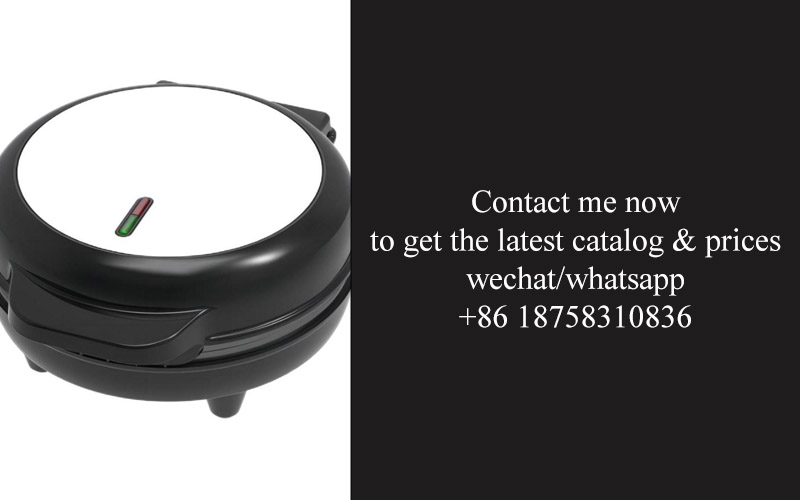
In the ever-evolving landscape of kitchen appliances, the future promises a blend of smart technology, sustainability, and user-centric design. As we delve into what’s ahead, several key trends are emerging that will redefine how we interact with our kitchen gadgets.
Smart Integration and ConnectivityAppliances are becoming more than just tools; they’re part of a larger ecosystem. The future kitchen will be equipped with devices that can communicate with each other, offering seamless integration and control. Imagine a refrigerator that not only keeps your food fresh but also orders supplies when you’re running low, or an oven that adjusts its temperature based on the recipe you’re following through your smartphone.
Energy Efficiency and SustainabilityAs environmental concerns grow, so does the demand for energy-efficient appliances. The future will see a shift towards sustainable designs that reduce energy consumption and waste. This could include appliances that use renewable energy sources, such as solar power, or those made from recycled materials, emphasizing a circular economy.
Personalization and CustomizationWith advancements in AI and machine learning, kitchen appliances will be able to learn from user habits and preferences. This means they’ll become more personalized, offering tailored cooking recommendations, meal prep suggestions, and even predictive maintenance to prevent breakdowns before they happen.
Health and Wellness FocusHealth-conscious consumers are driving the development of kitchen appliances that not only make cooking easier but also promote a healthier lifestyle. We can expect to see appliances that provide nutritional information, help in meal planning, and even incorporate ingredients that support overall wellness, like probiotics in refrigerators or air-purifying features in kitchen ventilation systems.
Augmented Reality and Virtual CookingAugmented Reality (AR) and Virtual Reality (VR) are poised to revolutionize how we interact with our kitchen appliances. Imagine using AR to visualize and follow complex recipes step by step, or VR to simulate cooking experiences in a virtual kitchen. These technologies could make cooking more accessible and engaging for everyone, regardless of their culinary expertise.
Sustainability and Ethical ManufacturingThe future of kitchen appliances will also reflect a growing emphasis on ethical manufacturing practices. Brands are increasingly focusing on sourcing materials sustainably, ensuring fair labor conditions, and reducing their carbon footprint. Consumers are becoming more conscious of these issues, and appliance manufacturers are responding by offering products that align with these values.
Voice Control and Smart AssistantsVoice-activated technology is becoming more sophisticated, and it’s set to become a staple in future kitchen appliances. Smart assistants like Amazon’s Alexa, Google Assistant, and Apple’s Siri will likely be integrated into kitchen devices, allowing users to control their appliances with simple voice commands, making the kitchen a more hands-free environment.
Modular and Expandable AppliancesThe future kitchen may not be about owning a single, all-encompassing appliance. Instead, we could see a trend towards modular systems where individual components can be added or replaced as needed. This would allow for greater flexibility and the ability to upgrade specific features without having to replace the entire unit.
Eco-Friendly Cooking TechniquesInnovative cooking techniques that minimize energy use and waste are on the rise. Induction cooking, for example, is already a popular choice for its efficiency, but the future could bring even more advanced methods that harness the latest in thermal technology to cook food faster and with less energy.
In conclusion, the future of kitchen appliances is a dynamic and interconnected one, where technology meets sustainability, personalization meets health, and convenience meets responsibility. As we move forward, the kitchen will become a hub of innovation, transforming the way we live and eat.
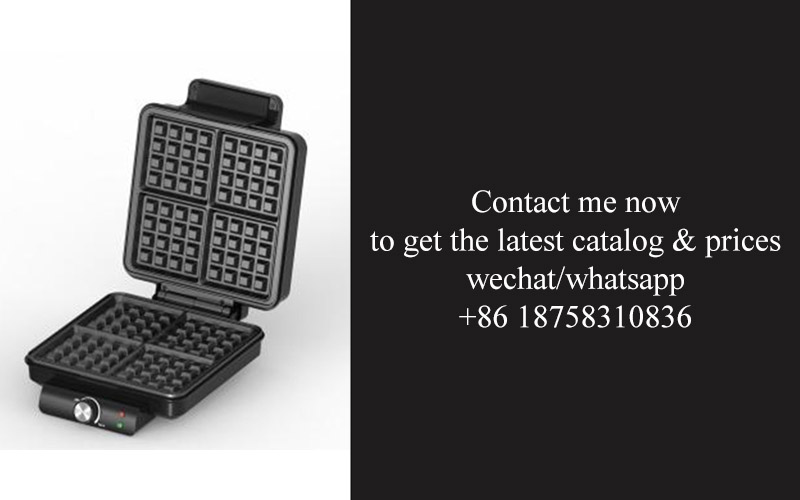
In recent years, the kitchen appliance market has undergone a remarkable transformation, with innovations and technological advancements reshaping the way we interact with our kitchens. These changes are not just about convenience; they are about revolutionizing the culinary experience, making cooking more accessible, efficient, and enjoyable. As we look ahead, several key trends are poised to shape the future of kitchen appliances, reflecting a blend of smart technology, sustainability, and personalization.
The integration of smart technology has become a cornerstone in the evolution of kitchen appliances. From ovens that can be controlled via smartphones to refrigerators that can suggest recipes based on their contents, the line between kitchen gadgetry and the digital world is blurring. This interconnectedness promises not only greater convenience but also enhanced safety, as appliances can alert users to potential hazards or maintenance issues.
Energy efficiency remains a critical factor in the kitchen appliance sector. As environmental concerns grow, manufacturers are under increasing pressure to produce appliances that consume less energy without compromising performance. This shift is evident in the rise of induction cooktops, LED lighting in appliances, and the development of energy-saving modes that can significantly reduce power consumption.
Personalization is another trend that’s gaining traction. Customizable kitchen appliances, such as refrigerators with modular shelves and ovens with adjustable cooking modes, cater to the unique preferences of individual users. This trend reflects a broader cultural shift towards consumer empowerment, where users can tailor their appliances to their specific needs and cooking habits.
The rise of eco-friendly materials and sustainable production processes is also a significant development. As consumers become more environmentally conscious, appliance manufacturers are responding by using recycled materials, reducing packaging waste, and implementing recycling programs for old appliances. This not only benefits the environment but also fosters brand loyalty among eco-conscious consumers.
Innovation in cooking techniques is another area where kitchen appliances are poised for significant changes. We’re seeing a surge in appliances designed to mimic traditional cooking methods, such as sous-vide machines that provide precise temperature control for perfect results every time. These gadgets are not just for professional chefs; they’re becoming accessible to home cooks who want to elevate their culinary skills.
The integration of health and wellness features into kitchen appliances is also on the rise. Smart cookers that can automatically adjust cooking times and temperatures to optimize nutrient retention are becoming more common. Additionally, appliances with built-in air filters and water purification systems are addressing the growing demand for healthier living spaces.
The future of kitchen appliances is also about connectivity. Appliances that can communicate with each other and with the user’s home automation system promise to create a seamless, integrated kitchen environment. Imagine a scenario where your oven can automatically preheat to the desired temperature when you’re on your way home, or your refrigerator can alert you when you’re running low on milk.
Safety remains a top priority, and we can expect to see even more advanced safety features in future kitchen appliances. From touchless interfaces that reduce the spread of germs to appliances that can detect and prevent accidents, the focus on safety is likely to continue to evolve.
Lastly, the future of kitchen appliances is about adaptability. As new ingredients and cooking styles emerge, appliances will need to be flexible enough to accommodate these changes. We may see appliances that can be easily converted to handle different types of food preparation or cooking methods, ensuring that they remain relevant and useful for years to come.
In conclusion, the future of kitchen appliances is a landscape of continuous innovation, where technology and sustainability go hand in hand. It’s a world where convenience meets health, efficiency, and personalization, all while doing its part to protect the environment. As we move forward, it’s clear that the kitchen will be a place where appliances not only enhance our cooking experiences but also enrich our lives in ways we’ve yet to fully imagine.